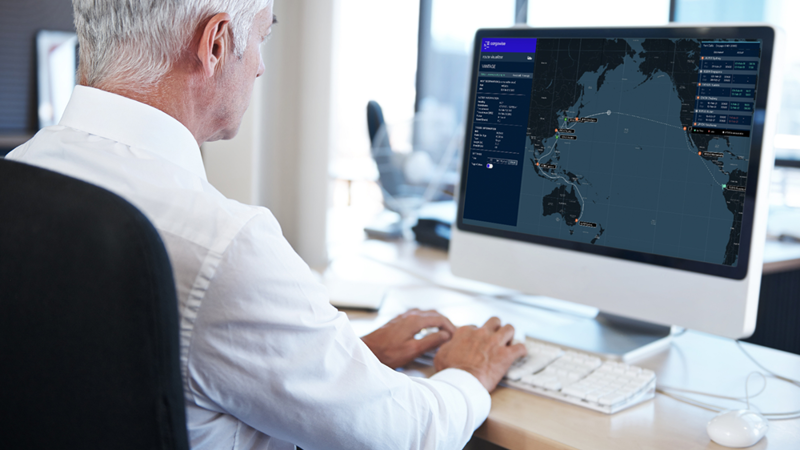I spend a lot of my time talking to customers, and many of us can’t recall another period in our careers when such a significant global demand for goods has converged with such extensive production and supply chain congestion.
For instance, despite high inflation, the U.S. Census Bureau reports that US retail sales increased 1.7% in October 2021, the largest gain since March, as consumers spend more on early holiday shopping. In fact, sales soared 16.3% year-on-year in October and are 21.4% above their pre-pandemic level.
At the same time, sharp lockdowns in key manufacturing hubs and ports contributed to skyrocketing shipping costs and increasing delivery times. What’s more, logjams in major ports, such as the ports of Los Angeles and Long Beach, have further disrupted the flow of goods, despite attempts to speed-up the processing of containers.
I’ve worked in logistics for the best part of two decades, and it is safe to say that this ongoing uncertainty has meant the push to digitalize manual, time-intensive, and error-prone processes and ways of working, has never been higher on the industry’s agenda, from the board-level down.
There is clearly an acute and growing demand for technology to help provide a more complete view of a shipment’s lifecycle, as close to real-time as possible.
But access to data is only one part of the equation. To successfully navigate this new normal and respond from a position of strength, information must be current to be actionable, and it ideally needs to be available via a centrally managed, single logistics record.
What are the benefits of increased visibility?
In most cases, good visibility leads to stronger and more agile supply chains. That’s because:
- With better visibility, you can move faster because you have a much better idea of what’s coming up.
- If you know what’s coming, you can mitigate potential issues and bottlenecks ahead of them arising.
- If you’re moving faster and proactively minimizing threats, you have more time for higher-value projects focused on improving customer service.
- You can look retrospectively at the impact of a particular supply chain disruption, and better model future impacts as well.
- You move from “fire-fighting” mode to a position of strength, where you can scale and flex assets and resources across different business portfolios, in response to whatever challenges you’re presented with.
How can technology improve your end-to-end visibility?
With supply chain bottlenecks showing no immediate signs of abating, and COVID-related closures continuing in certain countries for the near future, a single hub, platform, or database is your most straightforward solution.
Specifically, one system capable of retaining and exchanging this data while offering a portal for all trading parties to monitor and maintain their supply chain: standard connectors, simple status updates, and global visibility from the one place.
Our secure, cloud-based logistics execution software, CargoWise, brings your branches, departments, workforce, and operations together in one deeply integrated global system.
It removes the need to run multiple, complex systems and ensures shipments are processed with speed and precision – from the initial quote and booking to customs clearance, transport, forwarding, warehousing, and the final invoice being issued to your client.
Our flexible and comprehensive integrations across modules, geographies, customers, third-party and government systems can increase your productivity and efficiency. For example:
- Integration within and across modules in CargoWise means data is available immediately in other modules, thereby eliminating duplicate inputs and allowing real-time access across functions.
- Integration across geographies allows data to be instantly available across regions and translated across more than 30 languages and currencies.
- Integration with other customers enables logistics providers who interact with each other to benefit from improved productivity and greater operational visibility when they both operate on CargoWise – with data flowing through the one integrated system.
- Integration with other third-party systems provides customers with the flexibility to roll out CargoWise across their business while also enabling them to integrate with their other systems and other vendors’ products.
- Integration with government systems such as customs, quarantine, tax, food, drug, and other government agencies drives enhanced electronic processing, faster turnaround time and reduced rework.
By sharing data in real-time across your operations and automating your processes as much as possible, CargoWise gives you and your customers the access and visibility needed to ensure cargo moves with greater ease along the supply chain.
Accelerate your time to go-live with help from the experts. Our global CargoWise Partner network helps customers, of all sizes, implement and configure CargoWise to suit your business needs. Find out how
All news
Latest news
Sign up to our CargoWise Newsletter
Subscribe for the latest updates on new CargoWise functionality, success stories from our customers, and insights from our global team.
